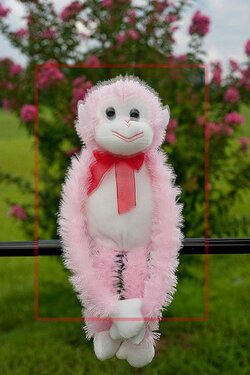Robin Usagani
Been spending a lot of time on here!
- Joined
- Jun 6, 2010
- Messages
- 10,347
- Reaction score
- 2,174
- Location
- Denver, CO
- Can others edit my Photos
- Photos OK to edit
Thank god.. i can sleep well now LOL.
Follow along with the video below to see how to install our site as a web app on your home screen.

Note: This feature currently requires accessing the site using the built-in Safari browser.
....................................DX 50mm.....................................................................FX 50mm...........................


Here's what you paid admission for..............
....................................DX 35mm.....................................................................FX 50mm...........................


This is very old stuff that has been known for decades.
Yeah, my FF switches between Full Frame and Crop by the push of a button and click of a dial.Four-year-old thread. Times have changed.
Four-year-old thread. Times have changed.
Prove it!You did not compare them equally. For all things equal, these should be compared as they actually were. The DX image is cropped, specifically it should be shown only 2/3 the size of the FX (which then also makes the same subject be same size), because, the same lens would of course project exactly the same size subject. You did not show that same image projected by the same lens. The DX frame is already seriously cropped (to 2/3 dimensions), and should be shown that way, because the same lens at same distance obviously projects exactly the same image view, no matter which camera.
That is real world. However, you introduced additional magnification changes in one of them.
At the time of this post, there was much chatter about DX vs FX and nobody had the balls to demonstrate. The consensus of questions was centered around the most common focal length..... 35mm vs 50mm of each format. If you had read the original post of that thread, there were a couple of coded references that should have been paid attention to. Specifically, "This is a v-e-r-y non-scientific lab results test. " and "(T)his made sense and I did a reshoot..... on a Sunday afternoon, I had nowhere to go, and no chance of driving.......... getting the picture? " . If you can't understand the inferences, then shame on you. The afternoon started like this.....Right that shows it, but you don't mention what it shows (some won't otherwise get it.)
Here you are showing that for any two images showing the same subject at same size (at same aperture, but regardless of focal length or focused distance that is necessary to produce same subject size), then the depth of field is obviously the same. This is very old stuff that has been known for decades.
Format size (film size, like even large 8x10 inch film, or whatever) appears to vary depth of field only because they necessarily use a much longer lens to magnify image to cover the larger film size.
Normal lens focal length for:
Compact camera -varies, around 7 mm
DX - around 30mm.
FX - around 50mm.
8x10 inch film - around 300mm
This lens choice does of course affect depth of field. 300 mm has much less DOF than 7 mm (on any camera body). Sensor size of course typically requires the specific lens. Smaller images do require more enlargement (another factor). But the cropped sensor size itself does nothing - it simply reproduces the image the lens projects on it.
Newbies ought to read up, at Depth of field - Wikipedia, the free encyclopedia
It may be a bit obscure, but it speaks of magnification affecting DOF. Specifically,
"DOF is determined by subject magnification at the film / sensor plane and the selected lens aperture or f-number. For a given f-number, increasing the magnification, either by moving closer to the subject or using a lens of greater focal length, decreases the DOF; decreasing magnification increases DOF. For a given subject magnification, increasing the f-number (decreasing the aperture diameter) increases the DOF; decreasing f-number decreases DOF."
Note it points out that Magnification can be obtained by moving close to subject, or using a longer lens. These are the factors that affect DOF (and aperture).

Really? Then why is the question still being asked four years on? You can bow your chest out all you like, but until you attempt to fail with examples, your words have very little significance. I look forward to your results.This is very old stuff that has been known for decades
You did not compare them equally. For all things equal, these should be compared as they actually were. ...That is real world. However, you introduced additional magnification changes in one of them.

This lens choice does of course affect depth of field. 300 mm has much less DOF than 7 mm (on any camera body). Sensor size of course typically requires the specific lens. Smaller images do require more enlargement (another factor). But the cropped sensor size itself does nothing - it simply reproduces the image the lens projects on it.
Note it points out that Magnification can be obtained by moving close to subject, or using a longer lens. These are the factors that affect DOF (and aperture).
If he shocked the monkey from 5 feet away at f/.6 with a 50mm lens, he'd have DOF of .67ft.
If he shocked the monkey from 20 feet away (4x further) at f/5.6 with a 200mm lens (4x longer), he'd have a DOF of .67ft.
Only if you know what the real Quantum Leap actually is?